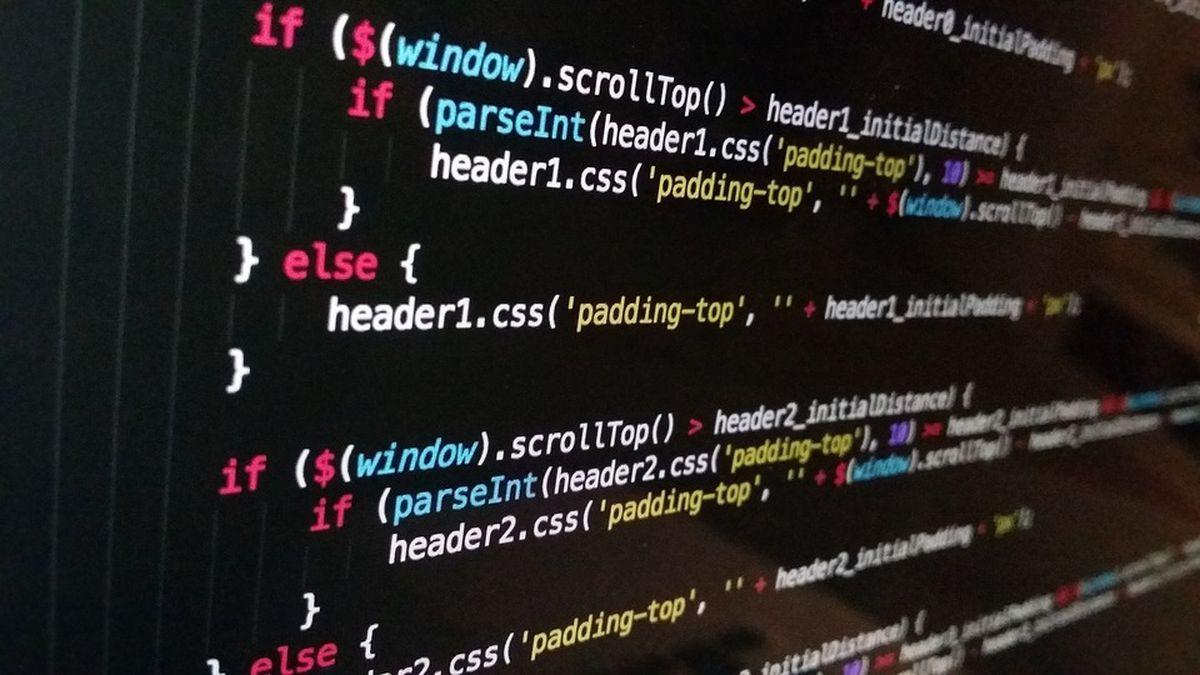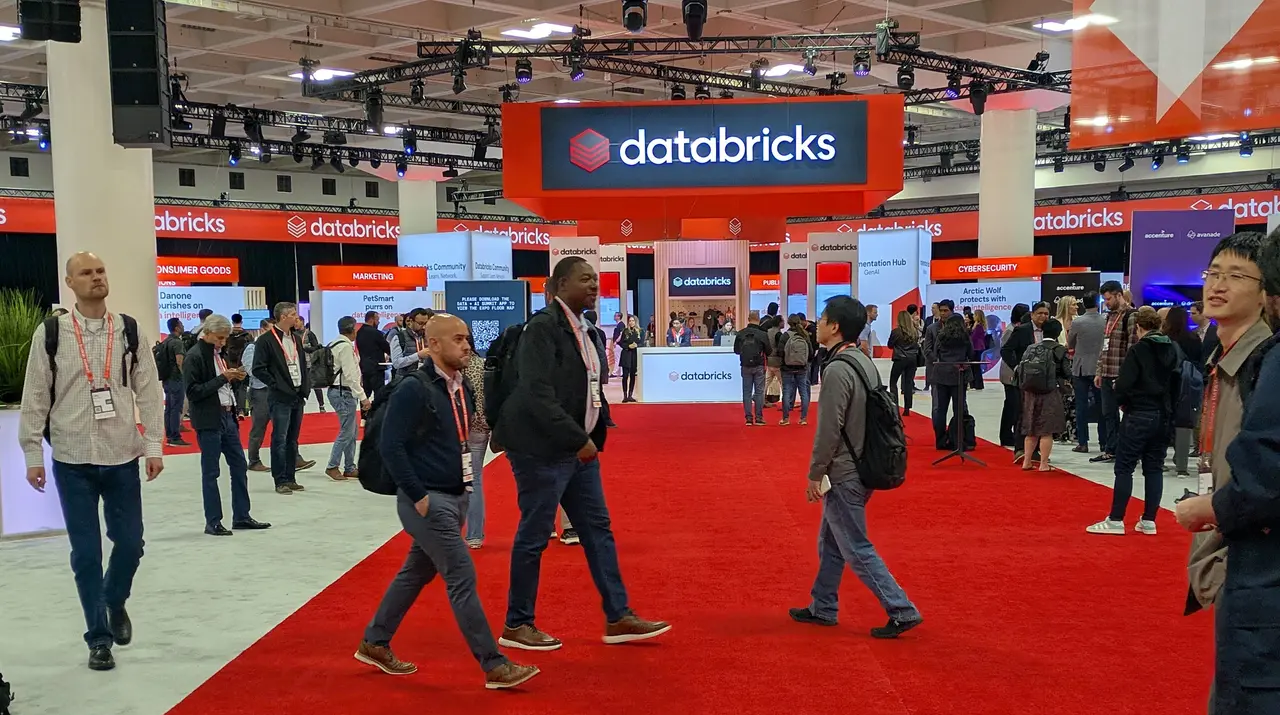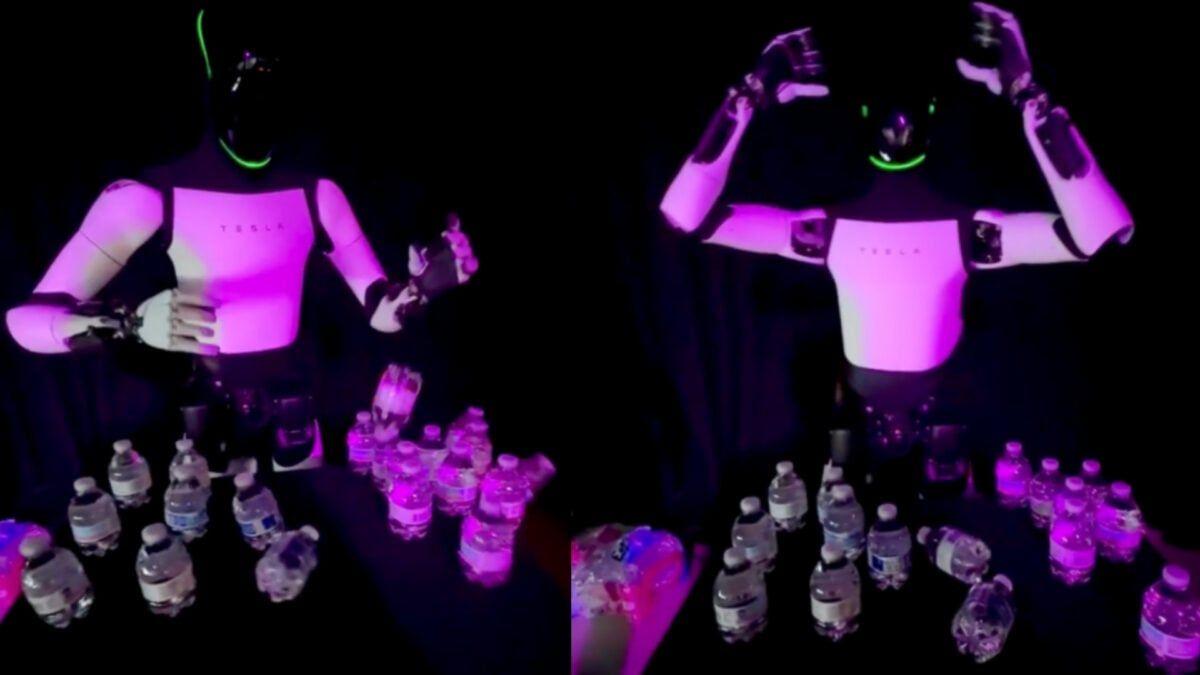Vibe Coding: The Promise and Perils of AI-Driven Software Development
4 Sources
4 Sources
[1]
Trust the AI, says new coding manifesto by Kim and Yegge
DevOps guru and ex-Googler say vibes beat reading diffs but there are risks This is OpenAI co-founder Andrej Karpathy's vision of "vibe coding" as he described on X in February - a new approach where developers surrender control to AI agents and simply trust the vibes. Karpathy did not advocate vibe coding for production, describing it as "not too bad for throwaway weekend projects." Now Gene Kim and Steve Yegge have written the book on it, and they want to persuade coders this isn't madness, but the future of software development. Kim is a researcher into high-performing technology organizations, well-known for his books on DevOps, and Yegge is a software engineer and blogger, formerly at Amazon and Google, and these days working on AI coding tools at Sourcegraph. The authors state in the preface that "vibe coding seems to be reinventing the foundations of how we build software." They have set out to convince skeptics by describing their own learning journey, targeting the book at "any developer who is building things" as well as product owners and infrastructure engineers. The book is presented in four parts. The first, called "Why vibe code," makes the case for this new way to develop software. Advantages cited are not only higher productivity, but the ability to tackle more ambitious projects, experiment more, shift the focus away from implementation details, and reduce the cost of change. In addition, non-technical people can now build software rather than waiting for the developer team to get through its backlog of requests. Although this section contains more than its share of breathless advocacy, the authors also describe pitfalls. One thing that saves this title from being useless propaganda is that both Kim and Yegge have extensive hands-on experience of and seem open in describing things that went wrong. These issues include: The authors do not see these issues, and others like them, as reasons to abandon vibe coding, but rather as learning experiences that help them to learn how to manage AI tools correctly. Part two expands on this with a look at the theory and practice of vibe coding, using a somewhat tiresome cooking metaphor involving chefs and sous chefs. Nevertheless there are some thoughtful tips here, such as optimizing AI context and the problem of context saturation: giving AI tools too much context degrades its responses, even to the point of incoherence. Part three turns to the confusing profusion of vibe coding tools and agents, and how the classic developer loop - code, compile, run, test, debug - changes in vibe coding to one that starts with defining a subtask and continues with an AI conversation, AI-generated plan, and so forth. The importance of tests is repeatedly emphasized. The final section of the book looks at how organizational culture needs to change to get the best from AI coding. Here Kim is in his element, as he discusses executive strategies, building standards, and changed skill requirements. Communication skills, once a nice-to-have, are now non-negotiable, he writes. The authors believe that "all knowledge workers will start vibe coding before long," an alarming thought to those who believe coding should be the exclusive province of trained developers. Despite its tendency to treat vibe coding as a bright new dawn for software, the authors do acknowledge the risks. A statement toward the end of this book says: "We have no doubt that if you adopt vibe coding with reckless abandon, ignoring the practices presented in this book, you are on a surefire path to chaos and endless pager calls - possibly followed by executives being forced to ban vibe coding." The Reg found the book repetitive in places - despite, apparently, using AI to help manage the content - and the writing style is not for everyone. It is also questionable whether this book is altogether about vibe coding. At one point, the authors describe how the AI got stuck trying to write a Gradle script and Yegge intervened to write the code himself. Most vibe coders are not Steve Yegge. Despite annoyances, though, there is plenty to learn from the authors about how to do AI-driven coding both individually and as a team or organization. If one takes the view that AI-driven software development is not going away, despite its many risks, then this is a valuable read. That said, the advocacy that characterizes much of the writing here, especially in its early chapters, is the worst thing about it. A more nuanced approach would have been preferable. Karpathy himself said in a recent interview: "I feel like the industry is making too big of a jump and is trying to pretend that this is amazing, and it's not. It's slop... the models are amazing. They still need a lot of work. For now, autocomplete is my sweet spot." Vibe Coding by Gene Kim and Steve Yegge is published by IT Revolution, ISBN 9781966280026 (paperback) or 9781966280033 (ebook). ®
[2]
Inventor of Vibe Coding Admits He Hand-Coded His New Project
Earlier this year, former OpenAI exec Andrej Karpathy coined a new term -- "vibe coding" -- for using artificial intelligence to rapidly develop software using natural language prompts. But the approach comes with some glaring shortcomings that have gradually come to light, from major cybersecurity problems leading to mass leaking of sensitive personal information to rampant hallucinations that turn vibe-coded projects into a buggy mess that has to be painstakingly fixed by human programmers. Even Karpathy himself has seemingly fallen out of love with his own creation. His latest project, dubbed Nanochat, is a "minimal, from scratch" interface that strips down a ChatGPT-like experience to its very basics. "You boot up a cloud [graphics processing unit] box, run a single script and in as little as four hours later you can talk to your own [large language model] in a ChatGPT-like web UI," he boasted in a recent tweet. But as it turns out, the project wasn't the result of AI vibe coding -- it was Karpathy himself. "It's basically entirely hand-written," Karpathy wrote in a followup. "I tried to use Claude/Codex agents a few times but they just didn't work well enough at all and net unhelpful, possibly the repo is too far off the data distribution." In other words, even the godfather of vibe coding doesn't trust the tech enough to use it on his own project. To be fair, even Karpathy himself never intended for "vibe coding" to replace human developers in the long run. "Sometimes the LLMs can't fix a bug so I just work around it or ask for random changes until it goes away," he wrote in the February tweet in which he first coined the term. "It's not too bad for throwaway weekend projects, but still quite amusing." But overrelying on the technique can have disastrous consequences as companies continue to cut costs in favor of investing in AI -- regardless of Karpathy's original intentions. As 404 Media reported last month, a growing number of coders are being tasked with fixing AI-hallucinated code. At best, projects never reach a satisfying level of polish. At worst, the shoddily-put-together lines of code can wipe out entire databases. Researchers have also found that AI-assisted coding can actually slow down human developers, instead of boosting their productivity. In a recent report, management consultants Bain & Company found that despite being "one of the first areas to deploy generative AI," the "savings have been unremarkable" in programming. "Generative AI arrived on the scene with sky-high expectations, and many companies rushed into pilot projects," the consultants wrote. "Yet the results haven't lived up to the hype." Content delivery platform Fastly similarly found that at least 95 percent of 800 developers it surveyed had to spend extra time fixing AI-generated code. Experts have also warned that the trend could result in human coders never learning the ropes properly. Leaning on AI coding too much may be "a bit of an impending disaster" as MIT computer scientist Daniel Jackson told Wired earlier this year. "Not only will we have masses of broken code, full of security vulnerabilities, but we'll have a new generation of programmers incapable of dealing with those vulnerabilities," he added.
[3]
3 Tips for How Vibe Coding Can Save Your Company Money
The process of using AI to quickly and informally write code, also known as vibe coding, has exploded in popularity over the course of 2025, largely due to technical advancements from artificial intelligence labs such as Anthropic and OpenAI. But how can you harness the power of vibe coding to grow your business, get more work done, and save money? At the 2025 Inc. 5000 Conference & Gala, two founders of vibe coding companies attempted to answer those questions. Here is their advice: Billy Howell, founder of development agency Stupid Simple Apps, told the audience that the key thing to understand about vibe coding is that "worse is better." According to Howell, most businesses are overpaying for software that they don't need, when a less complicated and cheaper solution could suffice. Howell said that he had recently worked with an employee of a boutique real estate investment fund. "Somehow," he said, "they had gotten their bill up to $100,000 on Salesforce." But according to this employee, the company only needed to accomplish something relatively straightforward. The employee asked if Howell could build a comparable tool using a vibe coding platform like Replit. Together, Howell and the employee developed a custom solution, which the employee sold to the CEO of the company. Now, according to Howell, the company no longer needs to rely on Salesforce, saving them a significant chunk of change. "Simplicity is more important than perfection," Howell said. "You don't need most features." Paul Ford, founder and CEO of Brooklyn-based AI-powered development platform and agency Aboard, introduced himself as the "enterprise version of Billy." Aboard customers are given access to a platform that enables them to vibe code a prototype version of their desired app, which the company's team of engineers then refine. Ford, who previously founded software studio Postlight, said that because of vibe coding, "what I used to charge you a million dollars for is now done in 10 minutes." Ford told the audience of entrepreneurs that in 2026, "I want you to explore options as you go." Instead of waiting for reports, he said, go find tools and "prototype, prototype, prototype." Not only is this process fast, Ford said, but it has the added benefit of eliminating many meetings from your schedule. "It's often faster to build than buy," said Ford, "which is also very unsettling." Vibe coding an app can be a good way to solve a simple problem. Kemis Hancock, chief operating officer of Hawaii-based IT services firm IndevTech, asked the panel for help building an app to help her find fun things to do with her children over the weekend. "I wanted to create a tool that would plan your weekend based," she said, "based on your budget, your family size," and other variables to help "moms who are too busy to plan." Howell suggested that Hancock try developing lengthy, "verbose" prompts that explain her needs in greater detail. One way to create these verbose prompts, he said, was to use audio dictation application Superwhisper and simply talk to your preferred AI platform, like Replit or Google AI Studio, in spoken language. He also said that vibe coders should try uploading a screenshot of user interfaces that are similar to what they have in mind for their own app. Similarly, Ford suggested uploading a PDF of the technical and aesthetic specifications of your app in order to give the AI model a better idea of what you're going for. Aboard started working on a weekend planning tool, and after roughly 10 minutes the platform had created a small app filled with fake weekend data. "The point of this isn't that I solved the problem," said Ford, "the point is now we actually can have a conversation about what should happen without it being incredibly abstract." From here, Ford says, the business leaders requesting the app and the software developers building it can start off on even footing, leading to a more collaborative process.
[4]
I 'Vibe Coded' an App Using AI -- and Got a Working Product in Under 5 Minutes for Free. Here's How I Did It.
I put vibe coding to the test, creating a mood tracker app using Lovable in under five minutes. In August, Anton Osika, the 35-year-old CEO of the vibe coding platform Lovable AI, said that artificial intelligence has largely removed the need for "technical know‑how" and "years of training" to create technology products. AI now allows people to "go from idea to working product without ever touching a formal CS [computer science] education," Osika told Business Insider. The key is vibe coding, or using AI coding assistants like Lovable, Cursor, and Replit to turn written prompts into code. Even Google CEO Sundar Pichai admitted in June to "vibe coding" his own website for fun. Nvidia CEO Jensen Huang said in the same month that AI now enables non-technical users to write code by giving prompts in plain English. AI is the "great equalizer" when it comes to bringing ideas to life with code, he said. Related: Should High School Students Still Learn to Code? 'Absolutely,' Says OpenAI Engineer Can anyone vibe code, or is the practice just for CEOs? I put that to the test by vibe coding my own app. I'm a reporter for Entrepreneur, covering everything from small businesses to tech giants. While I do have some familiarity with basic coding from college, it's been years since I last coded something. I chose the Lovable platform because it's beginner-friendly and has a free plan. I signed up with an email address and password, and immediately got started. I wanted to create a simple mood-tracking app that lets users log their moods and view a chart of their mood trends over time. The app should have the option to export mood data and set daily reminders for mood check-ins. Related: I Designed My Dream Home For Free With an AI Architect -- Here's How It Works I gave Lovable the following prompt: "Users log moods and see color‑coded charts showing emotional trends over time. Add reminders and data export features." After thinking for 20 seconds, Lovable promised to "create a beautiful mood tracking app with emotional trend visualization, reminders, and data export!" A few minutes later, the app was ready. It featured quick mood logging with five emotional states (joyful, calm, neutral, anxious and down), an interactive dashboard with mood trend charts, a color-coded calendar view, a daily reminder system and the option to export data to JSON/CSV. Lovable informed me that all data is stored locally in the user's browser. Related: I Tried 3 AI Headshot Generators and There Was a Clear Winner The AI code assistant even gave the app a name: MoodFlow. The app was ready to publish in under five minutes, including the time it took to sign up for Lovable. Here's a link to the published app: https://vibe-canvas-diary.lovable.app. I would need to test the app for a few months to really see how good it is at tracking my mood and to see if the trends and calendar tabs populate effectively, but from what I can tell so far, it's working well. While the app I created was simple, it could still serve as an effective mood tracker. I'm not the only one tapping into AI to create apps without manually writing a single line of code. In February, New York Times tech columnist Kevin Roose wrote that he managed to vibe code an app to help him decide what to pack his son for lunch, just by taking a photo of what was in his fridge. A few months later, in May, Rishab Jain, a neuroscience student at Harvard University, told NBC News that he vibe coded an app that translates ancient texts into English. Related: I Tried Airchat, the Hottest New Social Media App in Silicon Valley -- Here's How It Works The U.S. market for AI code assistants like Lovable was valued at $1.8 billion in 2024 and is expected to reach $12.4 billion within the next decade. I found it easy and intuitive to vibe code an app, and I could see myself doing it again. It was free and completed in under five minutes -- making creating an app almost as simple as downloading one.
Share
Share
Copy Link
A comprehensive look at the emerging trend of 'vibe coding,' its potential benefits, and the challenges it poses to traditional software development practices.
The Rise of Vibe Coding
'Vibe coding,' a term coined by former OpenAI executive Andrej Karpathy, has emerged as a controversial new approach to software development. This method involves using artificial intelligence to rapidly generate code based on natural language prompts, potentially revolutionizing the way software is created
1
2
.
Source: Futurism
Promises and Potential
Proponents of vibe coding, such as Gene Kim and Steve Yegge, authors of a new book on the subject, argue that this approach offers numerous advantages. These include higher productivity, the ability to tackle more ambitious projects, and reduced costs. They also suggest that vibe coding could democratize software development, allowing non-technical people to build software without waiting for developer teams
1
.
Source: The Register
Some entrepreneurs and developers have embraced vibe coding as a way to create simple applications quickly and cost-effectively. Billy Howell, founder of Stupid Simple Apps, advocates for the 'worse is better' approach, arguing that many businesses overpay for complex software when simpler, vibe-coded solutions could suffice
3
.Practical Applications and Success Stories
Real-world applications of vibe coding have shown promising results. For instance, a reporter for Entrepreneur magazine successfully created a functional mood-tracking app using the Lovable AI platform in under five minutes, without any manual coding
4
. Similarly, other individuals have used vibe coding to create apps for various purposes, from translating ancient texts to planning weekend activities3
4
.Challenges and Criticisms
Despite its potential, vibe coding faces significant challenges and criticisms. Cybersecurity concerns, rampant hallucinations in AI-generated code, and the need for human intervention to fix buggy outputs are among the major issues
2
.
Source: Entrepreneur
Interestingly, even Karpathy himself seems to have cooled on the concept. In a recent project, he opted for hand-coding rather than using AI assistants, citing their ineffectiveness for his specific needs
2
.Related Stories
Impact on the Software Development Industry
The rise of vibe coding has implications for the future of software development as a profession. While it may increase productivity for simple projects, experts warn that overreliance on AI-generated code could lead to a generation of programmers incapable of dealing with complex issues and security vulnerabilities
2
.The Future of Vibe Coding
As the U.S. market for AI code assistants is projected to reach $12.4 billion within the next decade, the debate around vibe coding is likely to intensify
4
. While it offers exciting possibilities for rapid prototyping and simple applications, the software industry must grapple with finding the right balance between AI assistance and human expertise to ensure the creation of robust, secure, and efficient software systems.References
Summarized by
Navi
[1]
Related Stories
The Rise of Vibe Coding: AI-Powered App Development Reshaping the Tech Landscape
21 Aug 2025•Technology

The Rise of 'Vibe Coding': AI-Generated Software Creates New Challenges and Opportunities
12 Sept 2025•Technology

Vibe Coding: Revolutionizing Software Development with AI-Assisted Programming
04 Sept 2025•Technology

Recent Highlights
1
AI Chatbots Sway Voters More Effectively Than Traditional Political Ads, New Studies Reveal
Science and Research

2
DeepSeek releases open-source AI models that rival GPT-5 and Gemini at fraction of the cost
Technology

3
Databricks Seeks $5 Billion Funding Round at $134 Billion Valuation Amid AI Boom
Business and Economy





